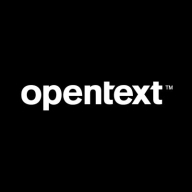

OpenText Cloud Service Automation and Morpheus are competing in cloud management and automation. Morpheus has the upper hand with superior integrated features.
Features: OpenText Cloud Service Automation offers robust workflow automation, comprehensive cloud cost management tools, and strong user-friendly interfaces. Morpheus provides multi-cloud integration, extensive DevOps support, and powerful automation capabilities.
Room for Improvement: OpenText Cloud Service Automation could improve in multi-cloud support, scalability, and API integration. Morpheus may need enhancements in UI customization, better self-service catalog offerings, and cost efficiency.
Ease of Deployment and Customer Service: OpenText Cloud Service Automation offers straightforward deployment and reliable customer service. Morpheus provides modular deployment with extensive customization, suitable for more complex environments.
Pricing and ROI: OpenText Cloud Service Automation is noted for lower initial costs and effective ROI in cloud cost efficiency. Morpheus, though higher in upfront costs, offers greater ROI through operational efficiencies and scalability over time.
| Product | Market Share (%) |
|---|---|
| Morpheus | 7.0% |
| OpenText Cloud Service Automation | 0.8% |
| Other | 92.2% |


| Company Size | Count |
|---|---|
| Small Business | 5 |
| Midsize Enterprise | 3 |
| Large Enterprise | 3 |
| Company Size | Count |
|---|---|
| Small Business | 1 |
| Large Enterprise | 6 |
Morpheus is a 100% agnostic cloud management platform (CMP) designed from the ground up to unify management of multi-cloud and hybrid IT while empowering DevOps teams with self-service provisioning of bare metal, VM, and container-based application services.
OpenText Cloud Service Automation provides open, heterogeneous, extensible enterprise-grade cloud service lifecycle management to design and orchestrate full stack services. CSA embraces existing automation assets with an enhanced orchestration engine, which provides IT with an informed, transparent delivery of secure compliant services for the hybrid cloud.
We monitor all Cloud Management reviews to prevent fraudulent reviews and keep review quality high. We do not post reviews by company employees or direct competitors. We validate each review for authenticity via cross-reference with LinkedIn, and personal follow-up with the reviewer when necessary.